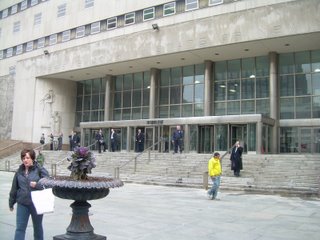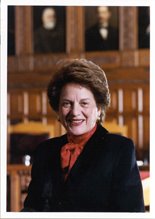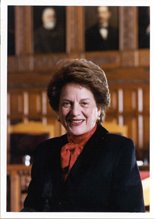 This is a story of how one courtroom in Brooklyn is responsible for wasting over $10 million in legal time. Every year. And that calculation is conservative.
This is a story of how one courtroom in Brooklyn is responsible for wasting over $10 million in legal time. Every year. And that calculation is conservative.
The scene for this nightmare is one of our local trial courts, the Supreme Court Building in Brooklyn. The courtroom is called the Central Compliance Part, or CCP as it is known to its denizens. And each day in this massive ceremonial room, a couple hundred hours of lawyers’ time is wasted. When this is annualized, the numbers are truly frightening.
To understand this misery, a little background is in order. All civil litigation starts, after the filing of complaints and answers, in an “Intake Part” where a preliminary conference is held and a discovery schedule is worked out. At that preliminary conference a compliance conference date is also set to mop up any outstanding issues. If your adversary decides to show up on time you could be done in a half hour.
But when you return for that compliance conference, you will not leave in a half hour. No way. The calendar will have over 100 conferences and motions on it. Over the course of a morning some 200 lawyers can easily come and go through this model of epic legal inefficiency. Today’s calendar, for example, had 75 conferences. It looked like this: /ConferencesCCP.pdf
Now add to that the motion calendar with 72 motions and cross-motions involving 54 different cases, which looks like this: /MotionsCCP.pdf
Now ask all the lawyers to show up at 9:30, in one place.
Even if you can work out any remaining issues with your adversary, and you can accomplish what you need in 10 minutes, which is often the case, you may not leave this room for two to three hours. Even if you work everything out and submit a proposed order with no issues that need judicial intervention, you might still wait for an hour for a signed order to be returned to you. And this waste doesn’t count the time going to and from court.
The system is so bad that a cottage industry of “per diem” lawyers has even grown up around it. These folks will, for about a hundred bucks, take care of your conference or routine motion. They make their living by running around from courtroom to courtroom on behalf of others who have conflicts, or who can’t spare half a day to do 10 minutes of work. While this may be seen as a boon to some who want to go this route, it also means that if you are on the other side of a per diem who has booked several different things in different courtrooms, you may be left cooling your heels waiting, and waiting and waiting, while they make their living elsewhere and waste your time.
This is no way to run a courthouse. The lawyers all know it. The judges all know it. The clerks all know it. Everyone hates it. Except for the per diem lawyers running around the courthouse putting their band aides on a septic system.
Having now ranted a bit, let me add my suggestions for fixing this very broken system that is wasting hundreds of hours of legal time every day on matters of simple discovery.
First: The court must create an electronic template for their compliance orders that the attorneys can use, with required dates for completion and a future conference. That is the easy part;
Second: Every Preliminary Conference should have a provision whereby the attorneys are required to have a conference call at least 20 days before the compliance conference so that they can use that template to create a stipulated order to complete outstanding discovery;
Third: All completed orders can be submitted via email to the court, with blanks left for future court dates and a place for the attorneys to note their availability or unavailability due to conflicts. The court then prints, signs, and files and the lawyers retrieve the order via eLaw.
Fourth: Any unresolved issues must be subject to a court conference call with one of the court attorneys. Scheduling is done by email with a specific time to call in;
Fifth: In the event of a real issue that has defied resolution, or an unreasonable or obstreperous lawyer is involved, a court conference is scheduled;
Sixth: Some lawyers don’t, ahem, get paid to move cases efficiently. They get paid to be unreasonable. Wasted time means more billable hours. The court has to start treating the directives in preliminary conference orders more seriously and be stricter with problematic firms as the judges do in the federal system. This will ultimately force lawyers to work things out, or risk the wrath of the court for being unreasonable or routinely ignoring orders.
The system is broken. Badly. It needs to be fixed.
And so, to the Powers That Be in Brooklyn, I beg and beseech you. Fix it. Just 200 hours of wasted time a day — and it is really much more than that — is 1,000 hours a week, which is over 50,000 hours per year. At $200/hour that is $10,000,000/year.
Out of just one courtroom.


